![(Photo credit: Almog Ganot) “You simply don’t see [construction workers] when walking around. We try to address all this in the show, the more ’dirty’ parts of society" (Photo credit: Almog Ganot)](https://static.davar1.co.il/www/uploads/2021/08/020821_dance_ENGLISH-1026x684.jpg)
At the height of the pandemic, when most people were shut up inside during lockdown, Eirad Ben Gal liked to wander the empty streets and many construction sites scattered throughout the southern city of Sderot. Although he does believe that “there is something very beautiful in construction sites,” he wasn't particularly interested in their aesthetic appeal. What interested Ben Gal were the construction workers.
“It’s wild that all these places are built by people who are practically invisible to our society — their lives can just pass us by,” the 28-year-old choreographer explained.
Ben Gal decided to use his field of dance to call attention to the dangers facing construction workers today in Israel. Construction site accidents in Israel have become the major cause of work-related injuries and deaths in recent years, with 58 deaths and 374 injured in 2020 alone, according Kav L'Oved – Workers' Hotline, a workers' rights nonprofit. 20 construction workers have been killed since the beginning of 2021.
Ben Gal was dancing in the Adama dance troupe and working as a choreographer and dance teacher at Sapir College, when his interest in construction workers began. After a worker was killed on a building site in Sderot, he decided to research workers’ rights for an assignment in a class he was taking about activism.
“I didn’t put too much thought into choosing this topic, but once I started learning, something about it drew me in,” he said. From there, his interest has continued to grow.
“There is something in me that cannot let this issue rest,” he said. “I saw that there were more and more deaths every week. The [workers who were] injured are not reported on at all, and I realized that there is a very great social injustice here, which no one is really dealing with. This is a story of lawlessness.”
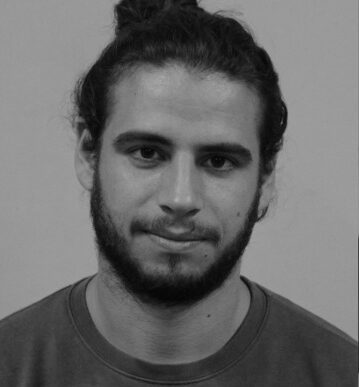
In 2020, Ben Gal produced “Building Downwards – Duet with a Concrete Block,” which he performed at the Intimadance Dance Festival in Tel Aviv. The show explored the dangers faced by construction workers and the unseen cost of Israel’s constant construction. Even as the pandemic began to impact Israel, Ben Gal continued to perform and share this unique story.
“During the coronavirus lockdowns, everything closed, and the first thing [the government] reopened were construction sites. Currently in Sderot, there is an obscene amount of construction happening," he said. "I would just go with my camera to these sites and photograph what I saw. I couldn't stop — I felt like there was much more to do.”
“If anyone cared, they wouldn’t be dying”
Ben Gal has continued to use dance as a medium to examine the issues facing construction workers. Last month, he and three other dancers put on a new performance called “They Won’t Live in the Houses They Build.” The show is a homage to Israeli poet Eli Eliyahu’s poem “The workers,” which begins:
“I see them at dawn, disgorged from the dump trucks / (From dust they came and to dust they will return, at the end of the day.) / I see them stumbling on scaffolding, being wounded / by ropes, hanging like bats from the shoulders of the cranes.”
“It’s a beautiful poem, and it’s been a source of inspiration for me since I started getting involved in the issues of construction workers and work-related accidents,” Ben Gal said. “And the line ’they will not live in the houses they build’ describes the essence of the painful and tragic absurdity of the issue.”
The tragedy isn’t just evident in poems and dance routines — the statistics make it clear as well. According to Kav L'Oved-Workers' Hotline, the number of workers killed in Israeli construction sites is 2.5 times larger than that of the European Union. This is mainly due to unsafe working conditions, outdated safety standards and poor government oversight, the nonprofit claims.
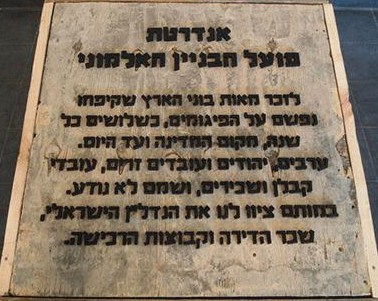
Ben Gal is not the first Israeli artist to highlight the stories of construction workers. The 2011 sculpture “Monument to the Unknown Construction Worker,” by late artist Shelly Federman, is now on display in the Tel Aviv Museum of Art and treats fallen construction workers as national heroes. Ben Gal follows this tradition through his dance.
He explains that the the disregard for workers' lives is a result of prioritizing building profits over the safety of the workers.
“If anyone cared about these workers, and if they were worth more than money, they wouldn't be dying,” he emphasized. “They’re dying because of money. And if there’s anyone whose life is treated as worthless because of money, it affects me, because that's the society I live in.”
“This issue, that money is more important than human life, enters our whole worldview and self-perception in the world — how we think about work, leisure, relationships, deciding what to study and even what to eat,” he continued. "The deadly reality for workers may be an extreme example, but that’s what the world looks like.”
He added that the world of dance also contains hierarchies, that dancers also may feel that they are tools to be made money from.
“It moved me to create a meaningful show”
For “They Won’t Live in the Houses They Build,” Ben Gal recruited his colleague Roni Shpira, a 29-year-old fellow dancer and director whom he met while studying at Sapir College.
“Eirad invited me to see the project he was working on, and in the first rehearsal, I already felt at home,” Shpira said. “It moved me to create a meaningful show, not one which is simply, ‘let’s see me dance and tell me how beautifully I danced.’”
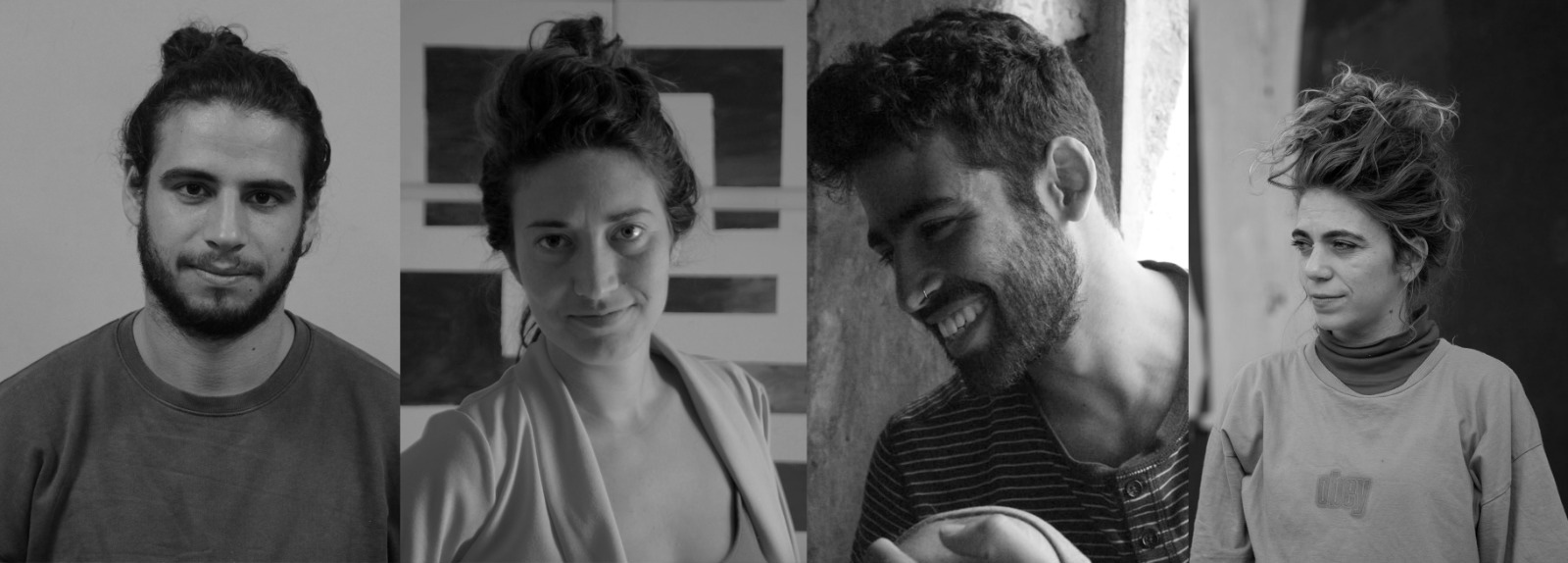
The show also features dancers Itay Dalumi (25) from Jaffa, and Adi Gewurtz (27) from Kibbutz Ruhama.
“During the past year, when cultural activities were the first to be shut down and last to reopen, I began asking myself what is the role of art,” Dalumi said. “What does the world need? Why do I do what I do? What is the connection of art to society? And in this project, through art, I can help with placing the spotlight on a social issue. This connection is a very significant one to me.”
“It’s very much in Eirad’s character to create something that is socially engaged,” Gewurtz added. “It’s not just ’my feelings’ and ’how I relate to the world.’ It’s stunning, and different in the landscape of dance. [Worker’s issues] aren’t a sexy subject.”
“My parents are revolutionaries. I learn a lot from them”
Ben Gal's parents are Liat Dror and Nir Ben Gal, two of Israel’s most significant and successful choreographers. He was born in Tel Aviv but grew up in Mitzpe Ramon, a small city in the middle of the Negev, where his parents founded the Hangar Adama dance center. Hangar Adama has since been relocated and is now operating out of Sderot.
After 17 years in Mitzpe Ramon, the family moved to a moshav near Sderot.
“Growing up in the periphery had a profound impact on me and influences my work,” Ben Gal said. “I’m really glad I did not grow up in Tel Aviv. Having the opportunity to attend a diverse high school really shaped who I am and how I perceive the world. Living with and around different kinds of people expanded my worldview and showed me that the world is a little more complex than I had thought.”
Since its founding in 1951, Sderot has served as a base for new immigrants — at first for Kurdish and Moroccan Jews and more recently for Jews from Ethiopia and the former Soviet Union — and has gained a reputation for being a diverse city.
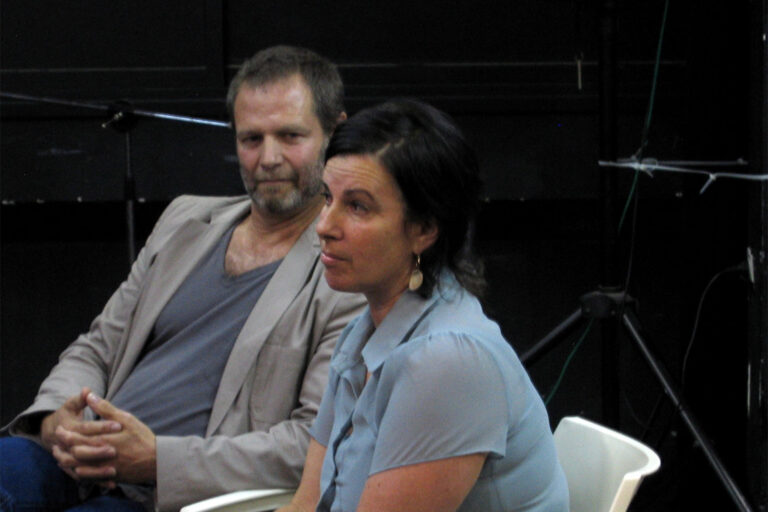
Ben Gal’s parents were highly influential for him.
“They are the most amazing people in the world,” he said. “They are revolutionaries. No doubt they have influenced me. I continue to learn a lot from them.”
“I really am privileged to call them my parents, but it took me a while to allow myself to ’take advantage’ of the fact that we are in the same field,” he continued. “At first I felt I had to distance myself from them and make a name for myself in my own right. Today, I am in a place where I know who I am regardless of them, and know what I want to say in my work.”
“People work hard for us and we do not see them”
For Ben Gal, the mistreatment of construction workers is just a symptom of a broader social problem of alienation.
“We are not happy and it’s as though there isn’t any reason,” he said. “Our lives seem so good, but we’re living in a society that doesn’t put people at the center. And it’s hard to recognize it. We’re distracted by reality television, nice clothes, and so-called culture and art.”
Construction, too, can serve as a distraction, obscuring its own human costs.
“In the State of Israel, people are constantly building, but there is a shadow cast over the buildings,” said Ben Gal. “You simply don’t see [the construction workers] when walking around. We try to address all this in the show, the more ’dirty’ parts of society, the people and issues that are sidelined.”
Ben Gal described how on nights out when he and his friends are on the way home in the early hours of the morning, Eritrean refugees are starting their days cleaning up after them.
“How loud does the music need to be or how hard do we need to dance just so that we can pretend that the worker is not sweeping up cigarettes behind us?” he asked. "This dynamic starts at a young age, with the school janitor.
“We are used to the notion that there are people who work hard for us and we do not notice or acknowledge them. As a society, collectively, this is something we just do not give any attention to,” Ben Gal continued, noting that construction workers and street cleaners continue to work despite the heatwave advisories to stay indoors.
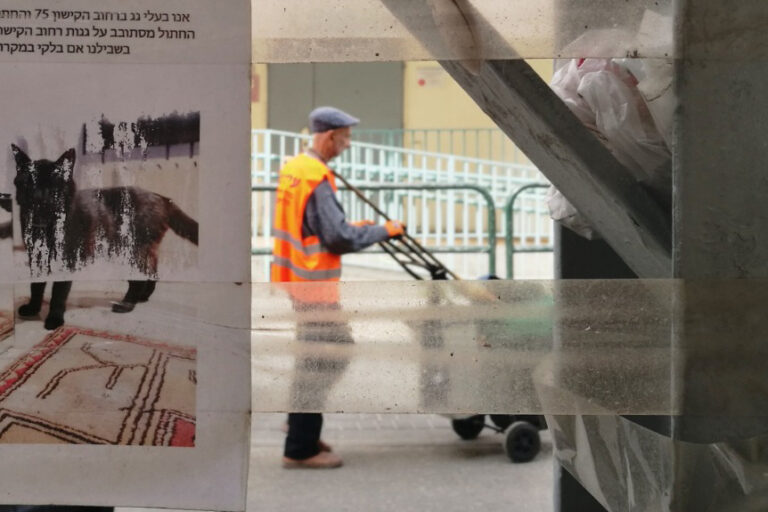
Gewurtz says that the show opened her eyes to other social injustices as well.
“I am naturally a less socially engaged person. I did not grow up in a youth movement, and I never dealt with what was happening around me in society,” she said. “In this work, I manage to find my personal connection to the subject. There are times we have had rehearsals where the content we covered moved me to tears.”
“The sidewalk outside the studio has been under renovation for a year now, and there are workers here all the time. They come inside to take a break and have coffee. I don’t think I would have noticed them at all before the show,” Shpira added.
Shpira’s partner is a handyman and her brother works in manual labor.
“Throughout the process, I thought about what they would think when they saw the show,” she said. “Construction workers don’t really shake their hips, but the point of the show isn’t for the construction workers to identify with it, or to offer them pity, or even to present an action plan. We want to illuminate the phenomenon.”
Dalumi, too, is interested in figuring out how construction workers themselves fit into their project.
“I ask myself a lot of how to present a social injustice through art without being exploitative,” he says. “How [do we make it] connected to us so that we’re not just imitating people? How do we take something and actually relate to it, not just present it, but actually be in dialogue with it?”
“If most of the workers were Jews, they wouldn’t be dying at this rate”
In the show, the dancers work with concrete bricks and a large wooden board.
“We deal a lot with physical weight,” said Ben Gal. “We have a lot of physical contact, a lot of weight — both the weight of life and the weight of responsibility. Sometimes I have three people on me. The brick that’s there at the opening of the show contains a lot of pain and weight.”
“There is a game of physical stability in the show,” Gewurtz added. “We try to dance on the plywood, to stand on it.”
The show also includes texts in English and Arabic written by Gewurtz and Dalumi.
“I have an American character who speaks English who struggles with finding and holding on to stability in their life,” Gewurtz explained. “It’s a script that is quite comedic but also very moving.”
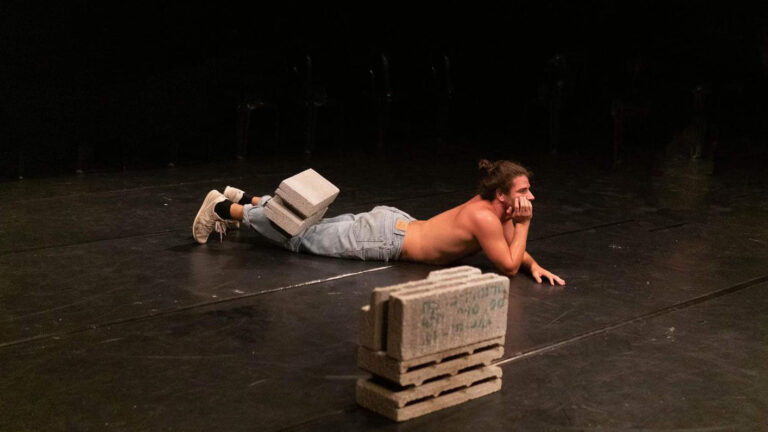
“I have lines in Arabic about what Adi says. And that brings up another interesting aspect,” said Dalumi. “She’s standing on the plywood, speaking the lines and going under the plywood. Basically, we’re both talking about stability and the need for stability. We are located in different places, but our personal aspirations are very similar.”
The combination of English and Arabic is meant to represent opposites.
“America is the extreme of capitalism, money, status, and Arabic is the opposite,” said Ben Gal. “The combination suggests an exploited party and an exploiter, but in the end, the script is similar.”
The inclusion of Arabic in the show reflects the demographic reality of construction workers.
“There is no doubt that the story of construction workers in Israel is related to the fact that 75% of them are Arabs,” said Ben Gal. “I think if most of the workers were Jews, they wouldn't be dying at this rate.”
“Arabs or foreign workers are cheap labor, which increases the apathy,” he continued. “When we see the name of an Arab [worker who has died] in the newspaper, it affects us less. It’s a very painful point to understand, and I felt we had to put it in somehow.”
The decision to include Arabic was also a controversial one.
“Suddenly I realized how difficult it is to put an Arabic lines on stage,” said Dalumi.
“It produces a lot of antagonism. Arabic raises another point, the one that is not understood. We understand English, but not Arabic,” Shpira added. “People do not understand what he is saying. People come out of the show and say quietly, ’What, is he an Arab?’”
“I have something to say to the world”
Ben Gal wrestled with the question of whether the dancers should represent workers and wear workers' clothes when they are on stage.
“I decided to be us,” he said of his decision to perform in casual clothing. “It’s very important to me not to fake. I want as many people as possible to know that so many workers are dying, and we want to make it undeniable through art.”
It’s as much a mission to him as it is a work of art.
“I have something to say to the world and I want it to go out to as many people as possible,” he said.
For Dalumi, the show has changed the way he sees the world.
“Since we’ve started production I keep seeing [workers]. These are things I haven’t noticed before. I see the workers in Jaffa, the Chinese workers building the light-rail under my house, workers from the territories, and I see how once someone isn’t a citizen, it’s so easy to infringe on their rights in the labor market,” he described. “I also understand how similar we are. I just wasn’t born there and they were. There is so much in common, but something so different in the circumstances.”






